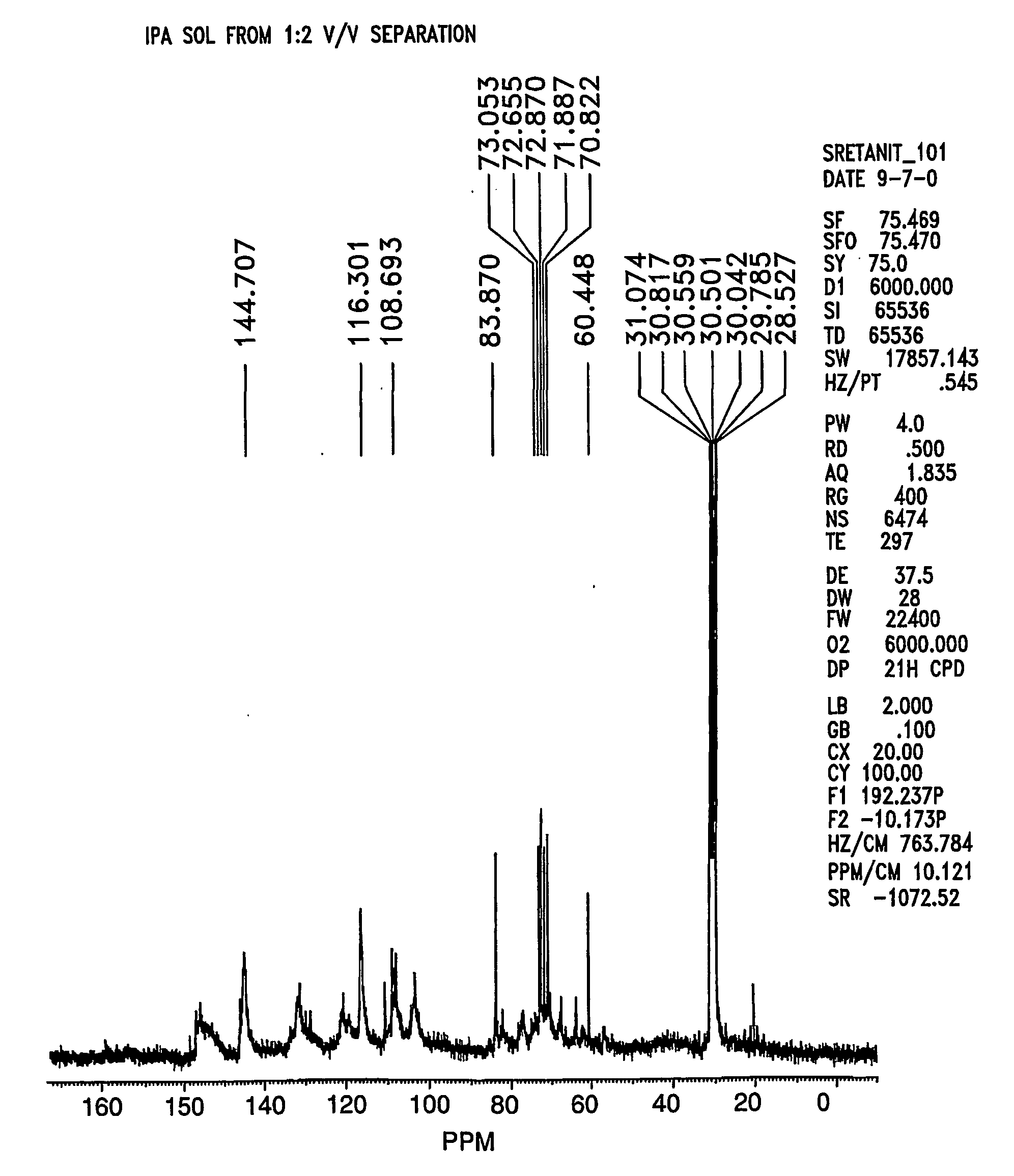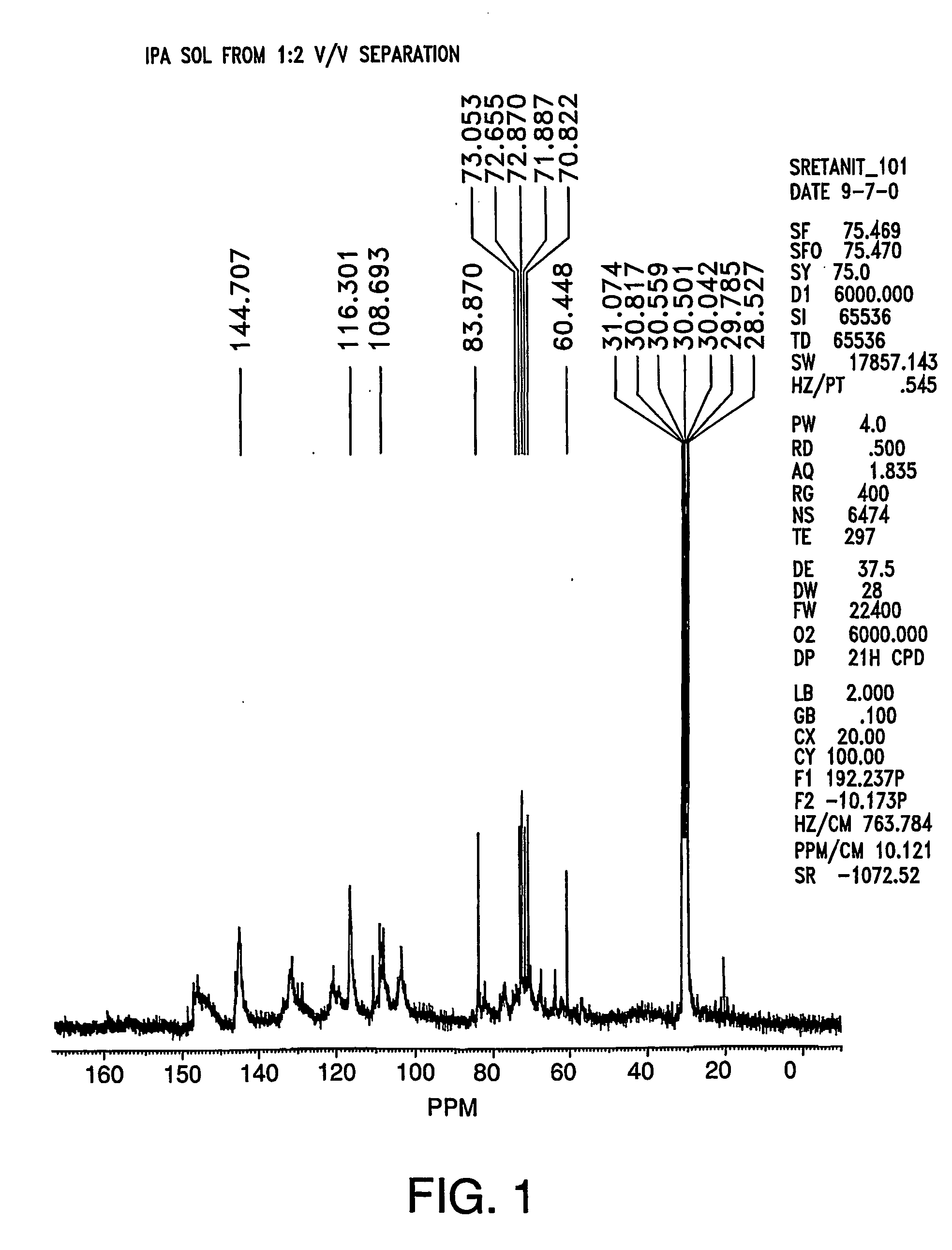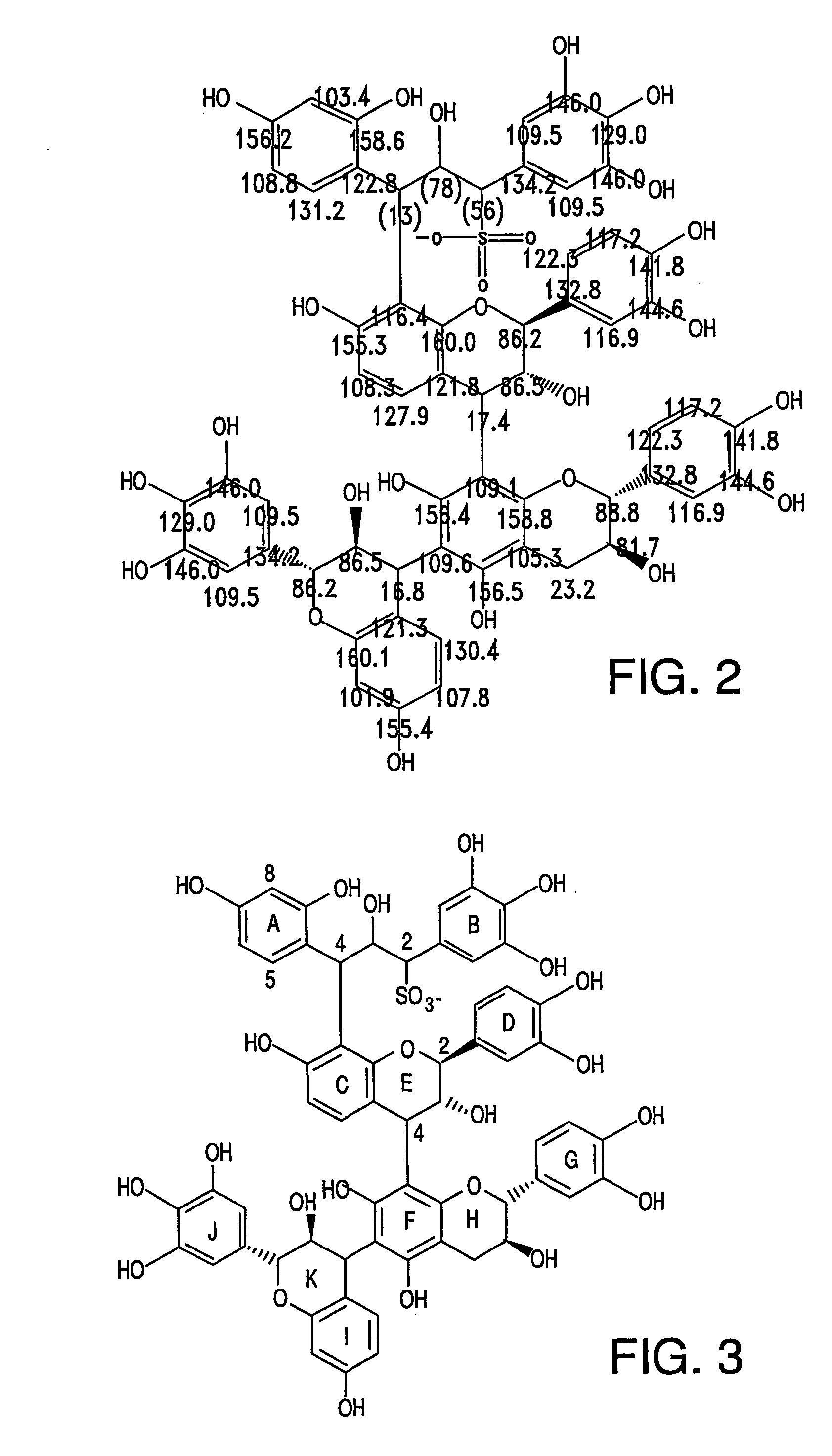Methods and products useful in recovering and recycling tannins
a tanning and product technology, applied in the field of tanning recovery and product useful in recovering and recycling tannins, can solve the problems of high phosphate concentration in tanning liquor, hard leather produced by chrome tanning, waste stream containing chromium, etc., and achieve improved tanning liquor, improved adsorption rate, and excellent performance.
- Summary
- Abstract
- Description
- Claims
- Application Information
AI Technical Summary
Benefits of technology
Problems solved by technology
Method used
Image
Examples
example 1
[0029] Tannin Recovery From Reconstituted Dried ReTan Using Ethyl Alcohol And Isopropyl Alcohol
[0030] Suspension of dried ReTan powder (one part) in ethyl alcohol (5 parts) and filtration gave approximately 32 percent yield of an ethyl alcohol-soluble product that was also 98.10% soluble in water and that had an active tannin content of 63.96% as determined by the hide powder method as shown in Table 1.
[0031] The ethyl alcohol-insoluble fraction of the ReTan was an orange-brown granular material which was easily filtered from the soluble portion. Alternatively, the insoluble fraction could be separated by known centrifuge methods. Because commercial virgin tannin extracts contain between 60% and 70% active tannin in the form of plant polyphenols, the inventor attempted fractionation and extraction of the active tannins from the ReTan by addition of alcohols and resulting phase separation. The inventor also felt that the insoluble fraction containing high levels of phosphate and much...
example 2
Determination Of Functional Limits For Alcohol Fractionation And Tannins Recovery Method And System
[0033] This experiment was made in an attempt to determine how various parameters might influence recovery yields of Super ReTan using isopropyl alcohol extraction. We explored the effect of the following parameters: a.) ReTan solids content; b.) isopropanl / ReTan volume ratio used in the separation; and, c.) Separation time on Super ReTan yields.
[0034] Based on Westfield's more than 15 years of experience with the tannery's triple-effect evaporator, and its operational limits in concentrating spent color bath product, it was decided that ReTan liquor in the 15-40% solids range was the viable starting point for this trial. Therefore, the experimental design called for starting samples with 15, 25, 30, 35, and 40% solids. The starting material for each sample was ReTan liquor at 29.5% solids, and samples were made by dilution or evaporation. The sample solutions were heated in a water ba...
example 3
Leather Production Trial
[0044] Previous trials had proven that tannins with near virgin material levels of active plant polyphenols were effectively reclaimed with the alcohol fractionation and recovery method. To test the usefulness of the recovered tannins, a significant quantity of leather needed to be produced using standard industry practices. Towards this end, two batches of 30 gallons each (114 liters) of SuperReTan were produced at a large industrial evaporator vendors test laboratory. Two separate 40 gallon drums of 30% solids ReTan liquor were mixed at a 2:1 ratio with isopropyl alcohol and allowed to stand for 30 minutes. Alcohol and aqueous fractions were separated by decanting with the phase break determined by simple visual color cues. The "top" alcohol-soluble fraction was processed in a counter current falling film evaporator and the isopropyl alcohol was recovered as the distillate with the SuperReTan as the residue. All operating conditions except for temperature, ...
PUM
| Property | Measurement | Unit |
|---|---|---|
| pH | aaaaa | aaaaa |
| volumes | aaaaa | aaaaa |
| specific gravities | aaaaa | aaaaa |
Abstract
Description
Claims
Application Information
 Login to View More
Login to View More - R&D
- Intellectual Property
- Life Sciences
- Materials
- Tech Scout
- Unparalleled Data Quality
- Higher Quality Content
- 60% Fewer Hallucinations
Browse by: Latest US Patents, China's latest patents, Technical Efficacy Thesaurus, Application Domain, Technology Topic, Popular Technical Reports.
© 2025 PatSnap. All rights reserved.Legal|Privacy policy|Modern Slavery Act Transparency Statement|Sitemap|About US| Contact US: help@patsnap.com



